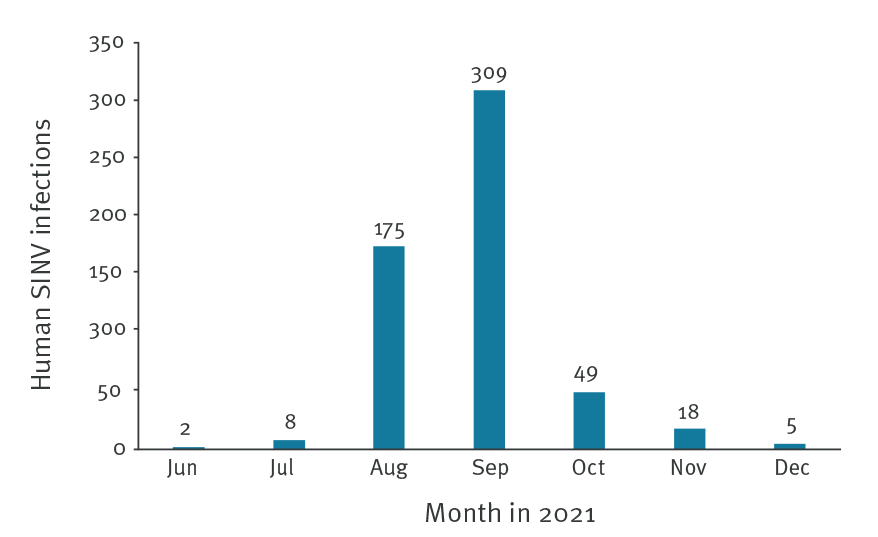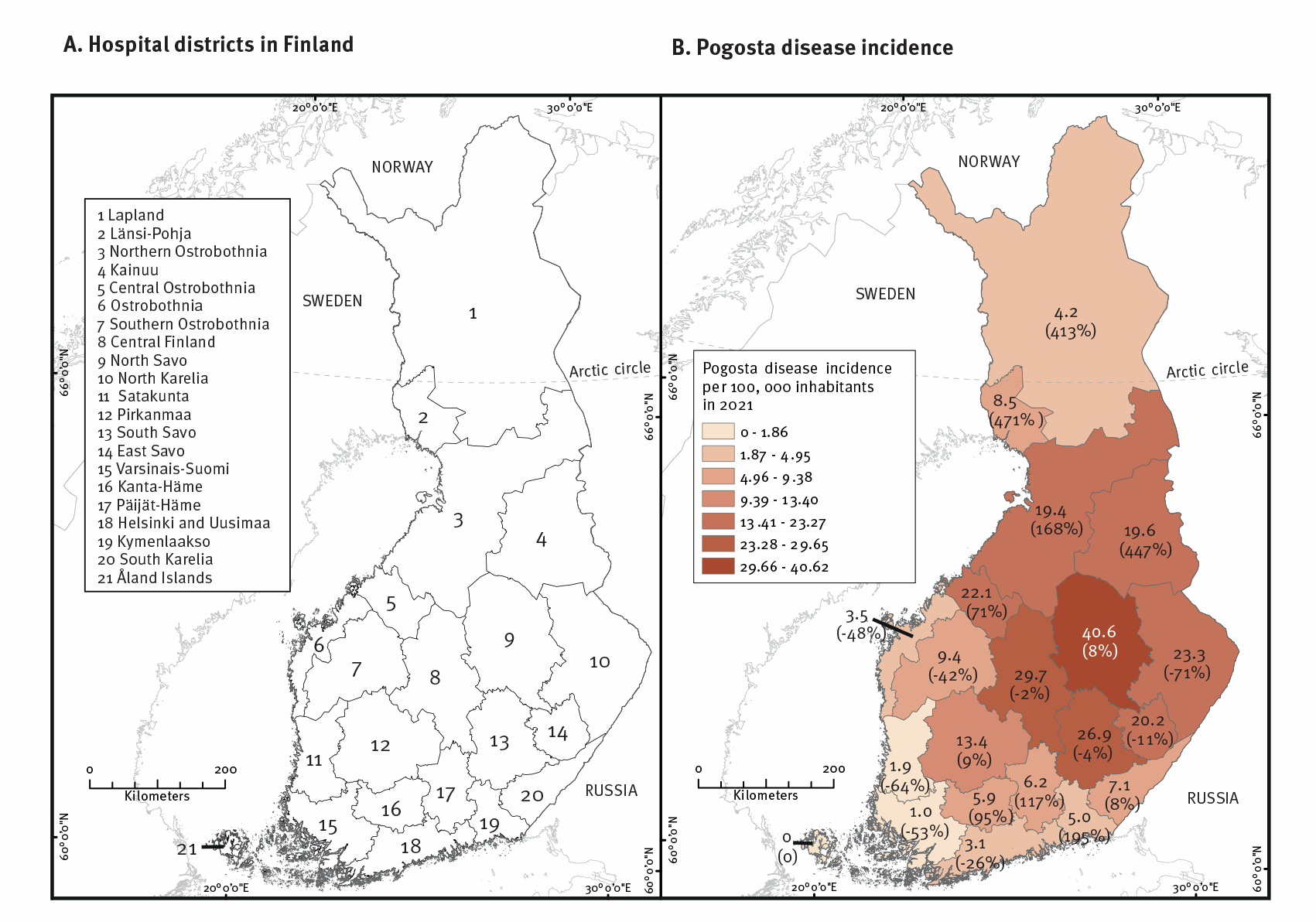What is SINV?
Although ribonucleic acid (RNA) viruses are not typically found in humans, they are responsible for many zoonotic diseases that eventually reach humans. Different types of birds, especially migratory and game birds, act as amplifying hosts for the SINV, which is primarily transmitted by mosquitoes.
Among these RNA viruses includes alphaviruses like SINV, which originated near Sindbis, Egypt. The Pogosta disease, which is caused by infection with SINV, manifests as a rash, myalgia, arthralgia, and fever. Arthralgia and myalgia due to this disease may persist for up to several months or years, which can have a detrimental impact on the affected individual’s quality of life.
Enzyme-linked immunoassay (ELISA) is typically used to diagnose the Pogosta disease, with positive results reflecting the presence of either SINV immunoglobulin M (IgM) and IgG antibodies in a single serum sample or when seroconversion has occurred between two serum samples. As of 1995, laboratory-confirmed cases of Pogosta disease have been reported to the National Infectious Diseases Register (NIDR).
The Finland SINV outbreak
Although SINV has been detected in mosquitoes and birds throughout the globe, symptomatic human infections are primarily reported in Finland, Russia, Sweden, and South Africa. Notably, in 2021, the transmission of SINV in Finland led to a major outbreak involving 566 laboratory-confirmed human cases that were distributed throughout the country.

Reported cases of Sindbis virus infection by month, Finland, 2021 (n = 566)
Late-winter heavy snowfall in 2022 rendered surplus melting water, which facilitated the early breeding of mosquitos. Thus, the weather throughout 2022 has been conducive to mosquito breeding.
Furthermore, there has been an increase in bird populations in Finland, which also provides more amplifying hosts for SINV. Taken together, these elements rendered favorable conditions for increased SINV transmission in 2022.
The Pogosta disease is likely underrecognized in Finland, particularly in places where the condition is scarce. The definitive diagnosis of SINV patients is crucial due to the potential burden of long-lasting joint discomfort. In Finland and Sweden, 24.5% and 39% of diagnosed patients, respectively, have experienced these symptoms.
Considering this looming threat, surveillance is currently being conducted to raise awareness of an impending SINV outbreak in 2022.
 Pogosta disease incidence per 100,000 inhabitants, by the hospital district, Finland, 2021 (n = 566)
Pogosta disease incidence per 100,000 inhabitants, by the hospital district, Finland, 2021 (n = 566)
About the study
The current study involved the use of laboratory-confirmed data from the National Infectious Diseases Register (NIDR) between 2002 and 2021. The period of sample collection, as well as the location of residence of the patients at the time of diagnosis, were analyzed.
In 2021, August and September witnessed the greatest number of SINV cases at 175 and 309 cases, respectively. Significantly fewer cases were reported in June, July, October, November, and December as compared to previous months.
In 2021, the incidence of Pogosta disease in various hospital districts ranged from 0 on land Islands to 40.6 in North Savo per 100,000 inhabitants. Most of these cases were reported in hospital districts in central, eastern, and western Finland.
Hospital areas in Lapland, which is along the southern coast of Finland, as well as the western coast south of Central Ostrobothnia, reported the lowest incidences of the Pogosta disease.
While several hospital districts reported considerable numbers of cases during both outbreaks in 2002 and 2021, clear disparities in cases were reported in the Western and Southern coastal hospital districts in 2021 as compared to 2002 within the range of 26-64%.
The incidence of SINV infection decreased by 71% in North Karelia; however, the incidence rate in this area remained high. SINV infections were also significantly higher in hospitals located in Lapland, Kainuu, Lansi-Pohja, Central Ostrobothnia, North Ostrobothnia, Kanta-Hame, Paijat-Hame, and Kymenlaakso.
Conclusions
Among mosquito-borne viruses in the EU in 2021, SINV was responsible for the largest outbreak, including a total of 566 confirmed cases in Finland alone.
It remains difficult to determine the factors that contribute to and facilitate SINV outbreaks. Thus, there is an urgent need to raise public awareness about the Pogosta disease and preventive measures capable of minimizing mosquito bites, especially in areas with a high incidence and forecasted risk, such as central, eastern, and western Finland.
As reported cases tend to fluctuate from one region to another, symptom identification and diagnosis remain difficult. Thus, virus-specific diagnostic testing of febrile patients who present with disease-specific symptoms is warranted.